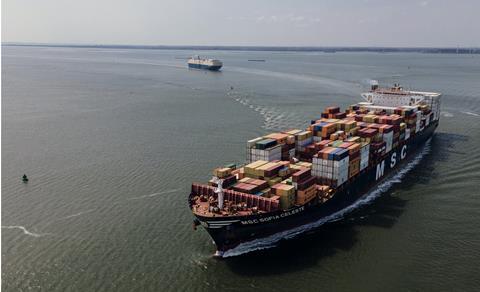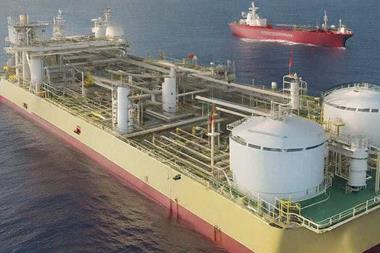Can returns from green shipping lure sceptical long-term investors? Christian Rychly makes the case for investing today

Like all industries, shipping faces a challenge to meet emissions reduction targets and the global transition to net zero. Although going green will be expensive, the shipping industry must invest in vessels, fuels and infrastructure to achieve the International Maritime Organisation’s (IMO) 2050 climate goals. Yet there is still a huge funding gap, uncertainty over tightening regulations and changing customer demands.
Transforming the shipping sector means low-carbon fuels must become available on a commercial scale, along with the infrastructure required to deliver them. Drop-in fuels like bio and synthetic diesel can be used without retrofitting the ships, but alternative fuels such as methanol require engine and fuel-supply system modifications. Even more challenging, ammonia requires substantial changes, reaching into the operational sphere on board.
An additional burden for the latter two cases is that only modern engine types allow for such modifications. Indeed, the total cost of shipping decarbonisation has been estimated to reach US$1.65trn (€1.51trn) by 2050; 87% of this is needed for land-based infrastructure and facilities to produce low-carbon fuels.
But the pace of change in the industry is, to some degree, influenced by the availability of financing for green shipping. Legacy financiers sometimes shy away from investing in green shipping because they are cautious of early-stage technologies or supporting a low-carbon fuel in the absence of clear regulations or global compliance standards. Despite this hesitance, the industry still needs to forge ahead with innovation to decarbonise the sector, because there is currently no perfect solution and there will be none in the next decade.
Research from the Global Maritime Forum highlights that if zero-carbon fuels accounted for 5% of the fuel mix by 2030, the shipping industry would be well on its way to fully decarbonising by 2050.

This is good news, as the international shipping industry is a critical pillar of the economy and is responsible for around 90% of world traded goods – from oil and steel to furniture and smartphones – ferried around the globe by sea. While some large consumer companies are pledging to use zero-carbon shipping, the reality is that until more green ships are available, a premium will be applied to cargo goods on low-emission vessels, which are few and far between.
Because of this, charters for greener ships or ships with lower emissions are turning out to be fixed for longer periods. Ultimately, if more investment went into new construction or retrofits of ships that are compatible with green fuels, early investors would be making higher returns and getting better offers. This means early movers will gain market advantage, which is already leading to the creation of new consortium lending systems.
Also, the increased focus on regulation around the world will be a driving force behind finance for green shipping. In January, the IMO brought in new rules targeting ships’ efficiency and carbon emissions. And the EU is now moving to regulate shipping emissions under its emissions-trading system, with shipowners required to submit verified emissions data for all voyages that start or end at an EU port from 2024.
Investors could take a wait-and-see approach to shipping. However, those waiting for the perfect confluence of conditions – financing, commercial, and regulatory – might be disappointed. As with the global transition to net zero, shipping’s green adaptation will not be a binary event but a journey with many adjustments to the course. The impetus for investment in decarbonisation is clearer in some shipping markets than others. The question is then: how can investors find the right opportunities to benefit from the charterer demands and customer influences that are creating above-trend returns for those early adopters?
With significant investment in the industry needed to accelerate the transition to net zero, and as shipping operators look to expand fleets to include greener vessels, financiers should look at being more innovative in how they rate credit risk. For example, rather than limiting themselves to evaluating the credit rating of the ship operator/owner, they could look at the credit rating of the chartering parties, including the cargo owners, if they are committed with long-term freight contracts. Doing so can assist small and medium-sized owners and owner-operators to unlock the financing needed to meet demand for greener ships.
Investors should also look closely at the geographic allocation of their shipping investments. Owners and owner-operators that are proportionally over-exposed to markets that are slower to embrace the green transition are likely to see below-trend returns in the medium to long term. That is critical for shipping investors, which must plan for the years, rather than the months, ahead.


















